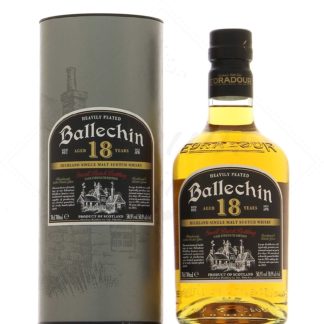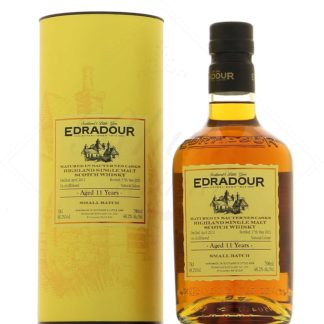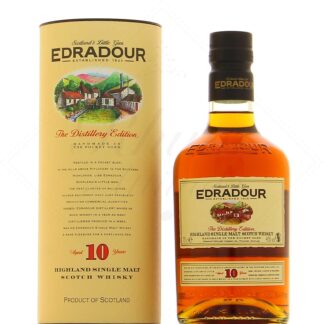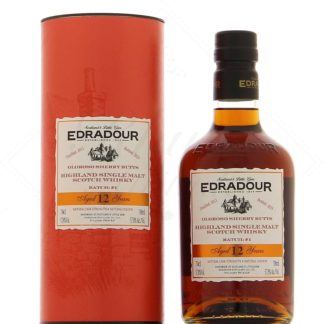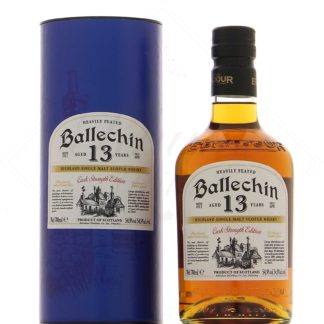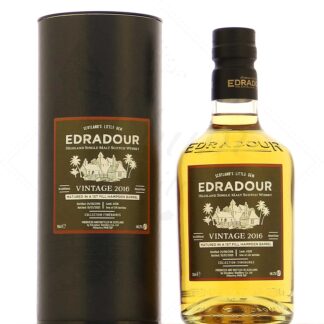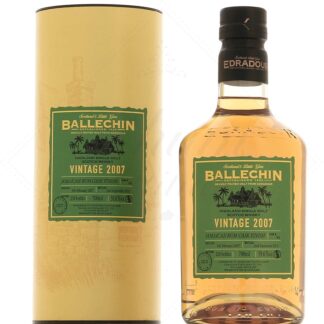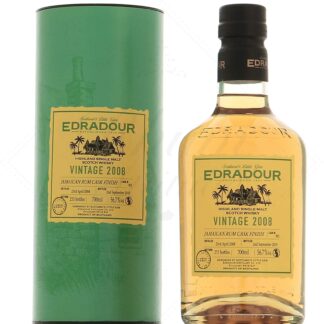Edradour

Edradour is a traditionalScottish Single Malt Whisky distillery located in Piltochry, Perthshire.
The history of Edradour
Edradour, like many Scottish distilleries, started out underground in the early 19th century. From an illicit still, it officially became a farmers' cooperative in 1825. It was not yet called Edradour, but Glenforres, and was run by Alexander Forbes.
In 1837, with James Scott and Duncan Stewart officially in charge, it took on its definitive name, Edradour, meaning "the land between two rivers". The first official census was taken in 1839.
Another change of hands occurred in 1853, when James Reid became the owner. Thirty years later, he sold the distillery to John McIntosh, the son of one of the founders. Edradour whisky began to make a name for itself.
In 1907, Peter McIntosh, John McIntosh's nephew, took over. He joined forces with John Stewart, a wine and spirits merchant. Together they further developed the brand's reputation and distribution.
Production continued despite the First World War, and later the owners found an unusual outlet by joining forces with the American mafia. One of their godfathers, Frank Costello, bought Edradour whisky and smuggled it into the United States at the height of Prohibition.
At the time, William Whiteley, previously the distillery's main customer as owner of House of Lords and King's Ransom blends, was in charge. When he retired in 1938, he handed over Edradour to Irving Haim, a lieutenant of godfather Frank Costello.
The arrival of electricity
In 1947, the water mill ceased operations, and the time for modernity came with the arrival of electricity.
In 1982, the distillery was bought by Campbell Distillers, a subsidiary of Pernod Ricard. The first 10-year single malt was released in 1986, while the King's Ransom blend disappeared. Much of the whisky is still sold in bulk for the House of Lords and Clan Campbell blends.
Andrew Symington, owner of the well-known independent bottling franchise Signatory Vintage, bought Edradour from Pernod Ricard in 2002. He then put Iain Henderson, ex-director of Laphroaig, in charge of the distillery. Together, they set out to raise Edradour whisky to the very top, and decided to release only single casks from now on, with a wide range of finishes.
They also decided to revive Ballechin in 2003. Recovering some of the distillery's lost equipment, they recreated its strongly peated style. A new winery was built in 2010, and all Edradour and Ballechin whiskies are aged on site, alongside the casks that Signatory Vintage has now also repatriated.
Edradour production
Edradour is one of Scotland's smallest distilleries, and has retained all the charm of its small-scale production. The distillery has perpetuated its rural traditions, such as supplying its spent grain to local farmers to feed their livestock.
The malt is brewed with water from the Ben Vrackie springs. The cast-iron mash tun is over a century old. The wort is cooled using a Morton cooler, also from another era.
After fermentation in Oregon pine vats, distillation takes place in two traditional pot-stills (the wash still holds 4200L and the spirit still 2200L). Heated over an open fire, they are also fitted with copper coils. These small pot-stills, operated by hand, produce very smooth, aromatic distillates.
The cellars are rich in casks of all origins, and over 25 different expressions are regularly offered. The cellar master appreciates wine casks, whether from Burgundy, the Rhône Valley, Madeira, Port, Moscatel or Hungary (Tokaji). We've also experimented with barrels of rum from Savanna (Reunion Island) or Jamaica. Read less
